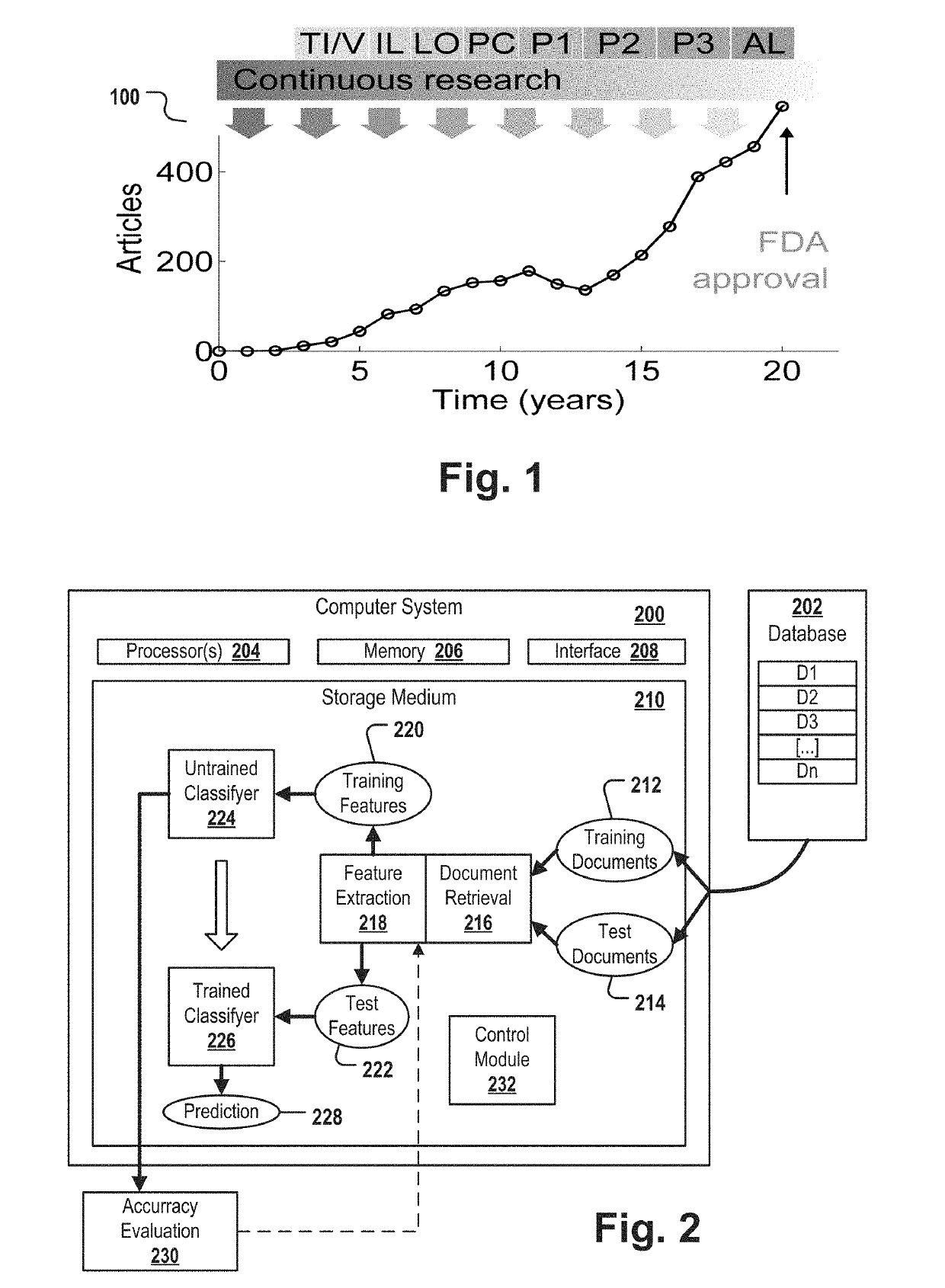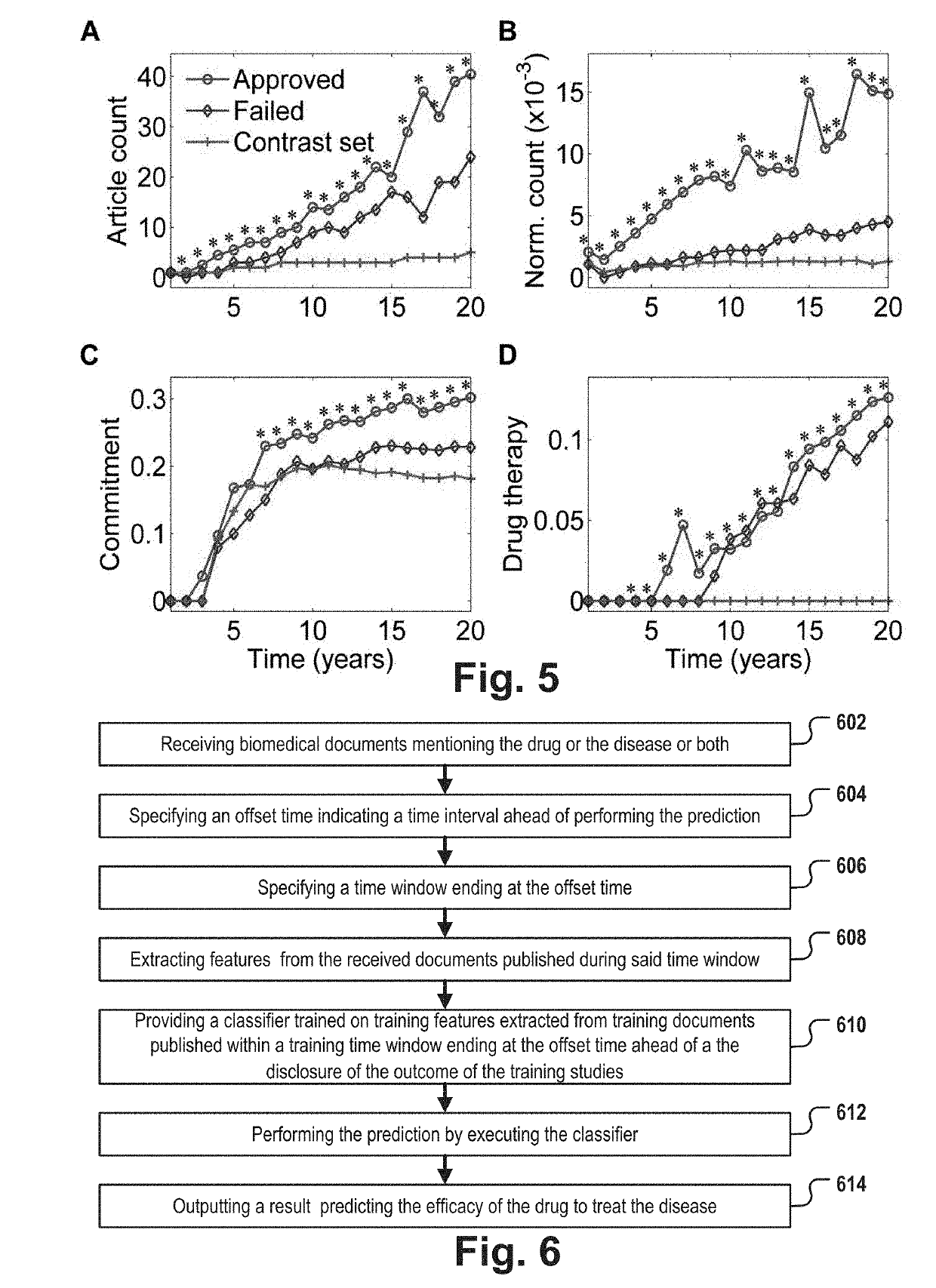System for predicting efficacy of a target-directed drug to treat a disease
a technology for predicting the efficacy and disease efficacy of a drug, applied in the field of machine learning, can solve the problems of affecting the success rate of clinical trials, so as to reduce ambiguity, avoid or avoid the effect of failur
- Summary
- Abstract
- Description
- Claims
- Application Information
AI Technical Summary
Benefits of technology
Problems solved by technology
Method used
Image
Examples
Embodiment Construction
[0156]FIG. 1 is a line chart 100 depicting a growing number of publications in the scientific literature for a target-disease pair in the field of targeted cancer therapies. The x-axis represents a time scale covering 20 years and the y axis indicates the number of publications per year comprising an identifier of both the target and of the disease of a given target-disease pair. The first appearance of biomedical documents, e.g. scientific articles describing a target molecule in the context of and together with a particular disease, e.g. a particular cancer type, is followed by a stream of “continuous research” on this subject. Moreover, the pharmaceutical R & D process starts which may comprise the following phases: target identification / validation (TI / V) for identifying the target whose activity modification can treat a disease, identification of a lead compound (IL) (the process of identifying a drug or drug version that is particularly suitable or effective for modifying the a...
PUM
 Login to View More
Login to View More Abstract
Description
Claims
Application Information
 Login to View More
Login to View More - R&D
- Intellectual Property
- Life Sciences
- Materials
- Tech Scout
- Unparalleled Data Quality
- Higher Quality Content
- 60% Fewer Hallucinations
Browse by: Latest US Patents, China's latest patents, Technical Efficacy Thesaurus, Application Domain, Technology Topic, Popular Technical Reports.
© 2025 PatSnap. All rights reserved.Legal|Privacy policy|Modern Slavery Act Transparency Statement|Sitemap|About US| Contact US: help@patsnap.com



